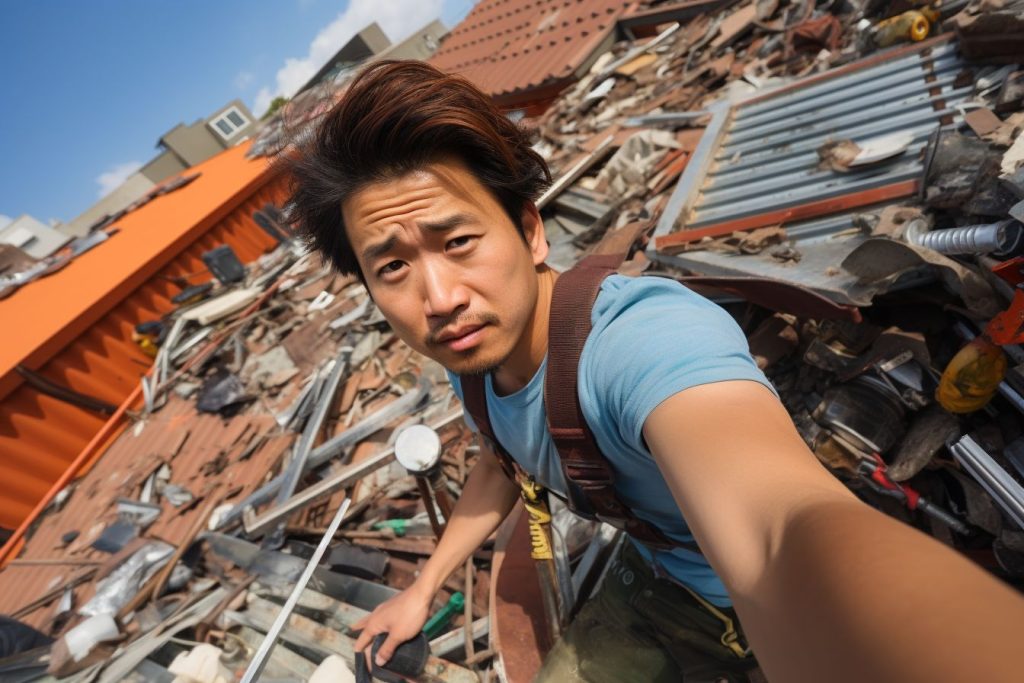When your roof suddenly springs a leak or suffers damage from a storm, you may need emergency repairs. As one of the biggest home emergencies, roof issues demand immediate attention to prevent further harm to your home.
This blog will guide you through the essential steps for emergency roof repair, from assessing damages and covering exposed areas to interacting with professional roofers and insurance companies.
Stick around if you want next-level ideas on urgent roofing solutions!
Key Takeaways
- Roof leaks can start as minor issues but can lead to severe damage if not addressed promptly. Hiring a professional roofer is essential for emergency roof leak repair.
- Storms and wind damage can cause significant harm to your roof, including loosening shingles or tearing them off completely. Immediate action is necessary to prevent further water infiltration and structural damage.
- Fallen trees can cause extensive roof damage, including water damage, pest infestation, and structural impairment. Inspect the extent of the damage and make temporary fixes while contacting a professional roofer for repairs.
- To minimise the damage during an emergency roof repair, cover exposed areas with plastic sheeting or tarps. Document the damages and file an insurance claim as soon as possible for financial assistance. Consider financing options if repairs are costly.
Types of Emergency Roof Damage
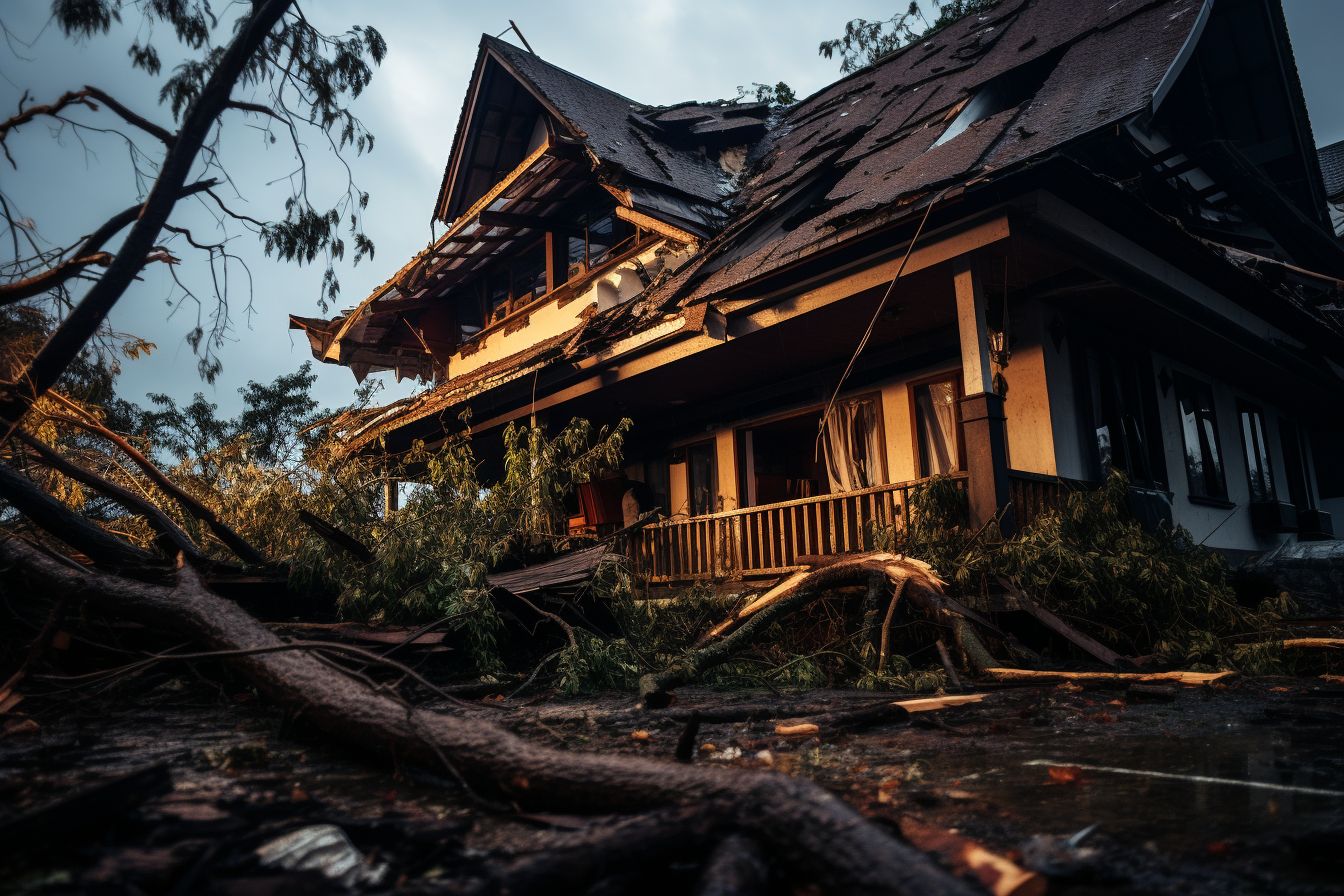
Roof leaks, damage from storms, wind damage, and damage from fallen trees are common types of emergency roof damage.
Roof leaks
Roof leaks emerge as a prevalent form of emergency roof damage. These leaks often originate from minor issues, such as condensation in the attic or unnoticed slow leaks, which exacerbate and lead to severe problems over time.
Unfortunately, these silent destroyers may not always fall under the bracket of immediate repair emergencies until significant harm is done. So, an effective course of action involves hiring a professional roofing contractor to quickly manage your emergency roof leak repair needs.
This preventive measure becomes indispensable for shielding your home from further damage and maintaining its integrity in unfavourable conditions.
Damage from storms
Storms can wreak havoc on your roof in various ways, creating an emergency that may require immediate repair. Intense wind and heavy rain often contribute significantly to this type of damage.
High-speed winds can loosen shingles or even tear them off completely, exposing the roof’s underlayment to harm further.
The severity of water damage escalates if a storm breaches the structural integrity of your roof. If left unattended, these incursions permit rainwater to seep into your home’s interior, causing extensive destruction to the ceiling and potentially impacting walls and furniture.
Fallen tree branches also pose a serious threat during storms, with the potential for puncturing or demolishing part of the rooftop structure.
Wind damage
Strong gales and violent storms often result in wind damage, posing a significant threat to roofs. Heavy wind can strip away roofing materials, opening the pathway for water infiltration.
Falling tree branches propelled by fierce winds inflict further harm, causing punctures or structural impairment. This windstorm aftermath leaves properties vulnerable to ongoing weather conditions, amplifying homeowners’ disaster recovery challenges.
While coping with these emergency roof repairs may seem overwhelming at first glance, insurance coverage often alleviates some financial burdens associated with rectifying such property damage.
However, severe cases may necessitate an entire roof replacement – a feat beyond mere repair due to its complexity and cost implications.
Damage from fallen trees
Damage from fallen trees can result from various factors, such as lightning strikes, harsh winds, severe storms, and fires. A tree falling through your roof can cause water damage, pest infestation, and structural damage.
I would need immediate action to look into the extent of the damage and make temporary fixes to prevent further issues. Missing shingles, cracked or broken shingles, mould growth, and fallen debris are common signs of roof damage caused by fallen trees.
Remember that homeowners insurance may not cover negligence or maintenance-related problems like rotting trees.
Steps to Take During an Emergency Roof Repair
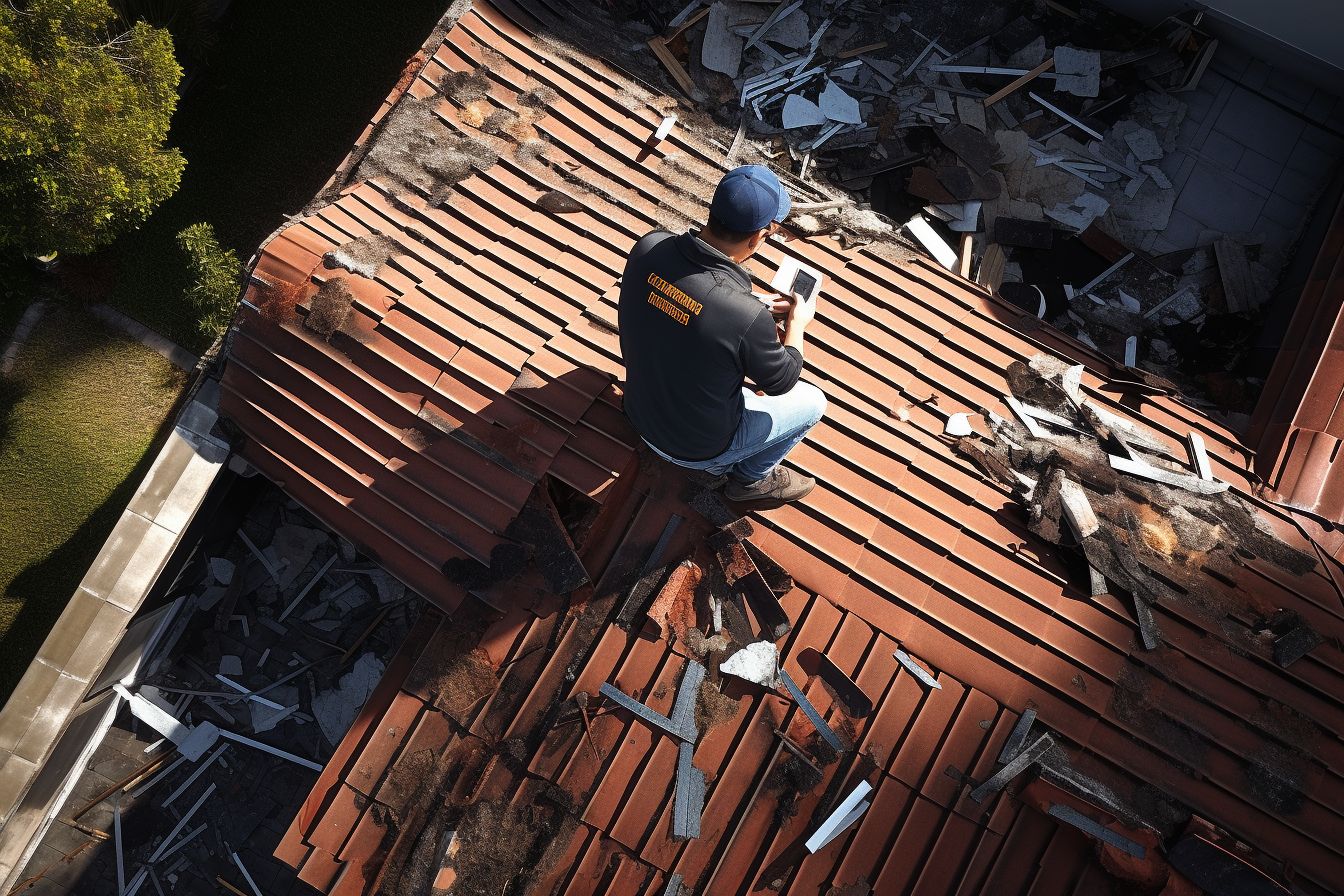
Cover exposed areas, contact your homeowner’s insurance representative, and call a professional roofer for immediate assistance. Don’t wait – take action now to prevent further damage! You can learn more about essential tips and resources for emergency roof repairs.
Cover exposed areas
Covering exposed areas is a crucial step when dealing with emergency roof repair. By taking immediate action to cover any holes or openings in your roof, you can prevent further damage to your home.
One effective method is to use plastic sheeting or waterproof tarps to provide temporary protection. Placing buckets or containers underneath leaks can help minimise damage while waiting for professional roofing services.
It’s essential to act quickly and secure these temporary covers using fasteners, such as nails, to make sure they stay put and protect your home from additional harm. Remember that by promptly covering exposed areas, you are taking proactive measures to protect your property during an emergency roof repair.
Contact your homeowner’s insurance representative.
I want you to know that contacting your homeowner’s insurance representative is crucial during an emergency roof repair. It is important to report the roofing damage to ensure you receive the necessary coverage.
You should contact your insurance company immediately if it’s a roof leak, storm damage, or wind damage. Remember, if the damage resulted from a lack of roof maintenance, insurance might not cover it.
To navigate this emergency effectively, please find an experienced contractor and file an insurance claim if you need one.
Call a professional roofer.
I’d like to point out that you should contact a professional roofer when facing an emergency roof repair. Expert roofers have the necessary skills and experience to assess the damage and provide the required repairs accurately.
They can quickly determine the extent of the problem, whether it’s from roof leaks, storm damage, wind damage, or fallen trees. With their expertise, they will ensure that your roof is properly repaired to prevent any further complications.
Remember that remaining calm after a roof emergency is crucial, as professionals often see things differently than homeowners. Therefore, it’s highly recommended to contact a reputable roofing contractor with steps for dealing with emergencies as soon as possible.
Essential Guide to Roof Repair
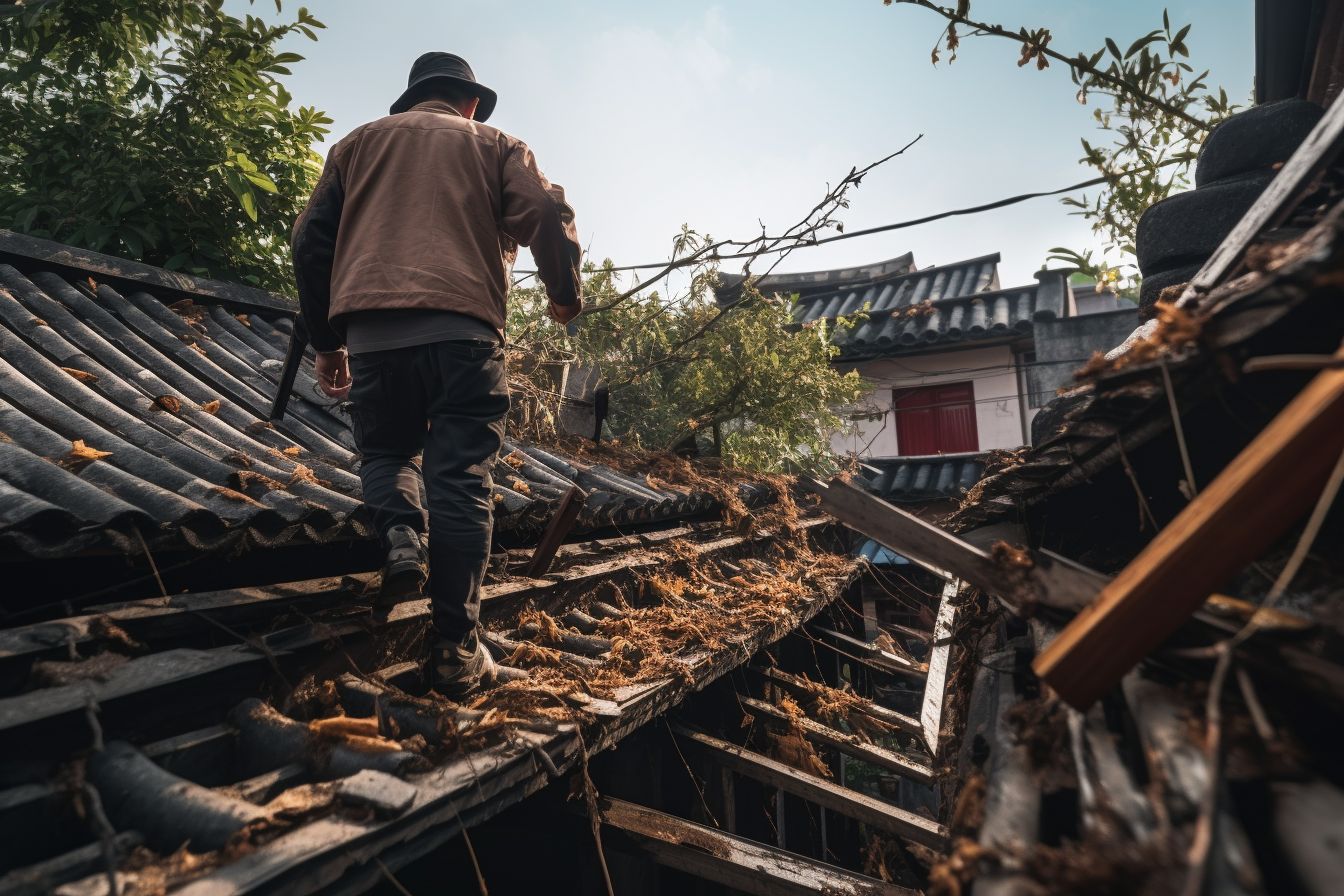
Roof repair is an essential task for maintaining the integrity of your home. To help you navigate through this process, here are some important steps to follow:
– Start with a thorough roof inspection to assess the extent of the damage.
– Could you identify any leaks or areas that require immediate attention?
– Replace damaged shingles or tiles to prevent further water infiltration.
– Check and repair any issues with roof flashing, as it helps seal vulnerable areas.
– Ensure proper roof ventilation to prevent moisture buildup and extend the lifespan of your roof.
– Consider waterproofing measures to protect your roof from future damage.
Remember, conducting regular maintenance and promptly addressing repairs can save you from costly expenses. For more detailed guidance on roof repair, visit (https://roofrepair.my/).
Tips for Minimizing Damage and Financing Repairs
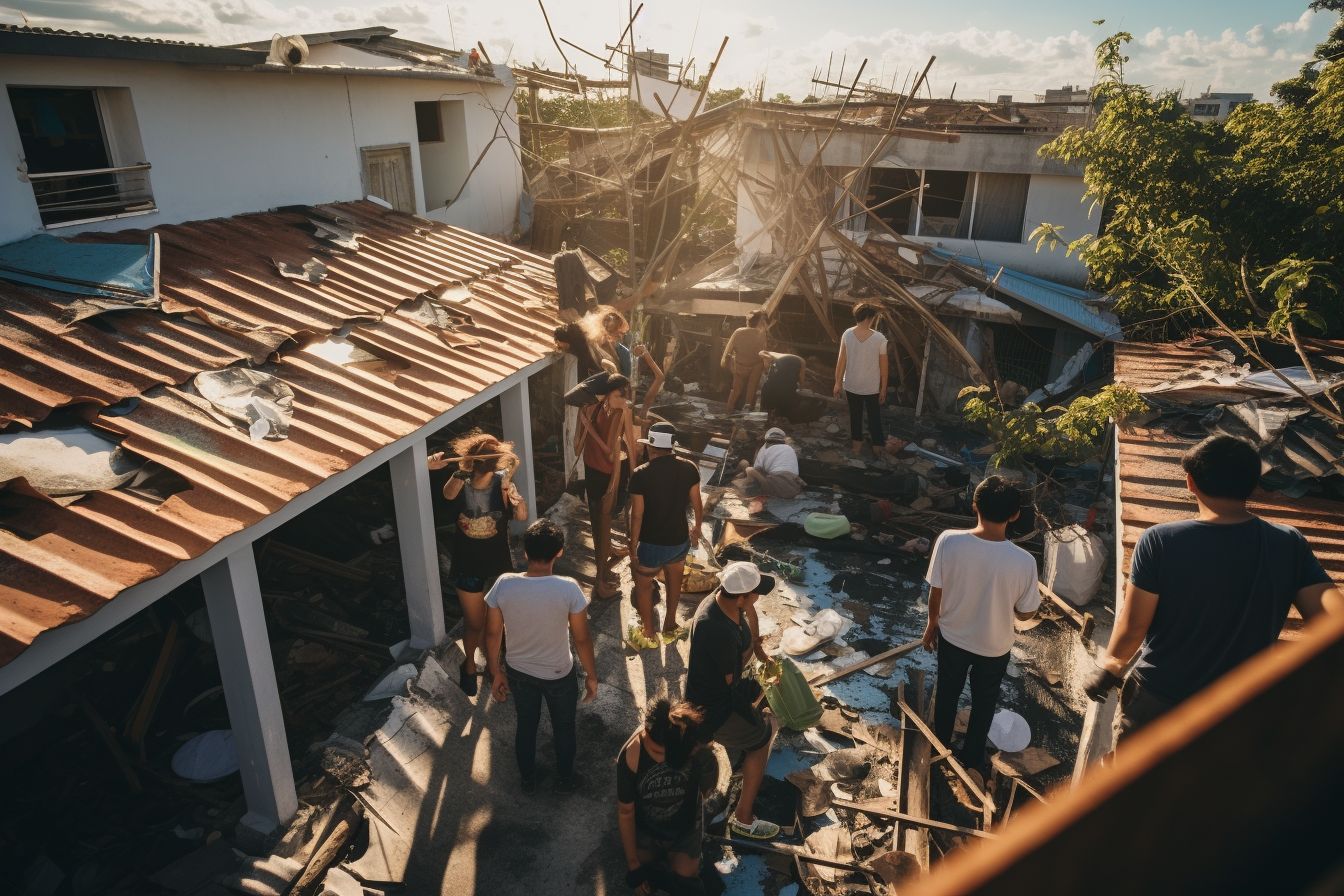
Could you document the damage to your roof and any other areas affected by the emergency? Tarps can be used as a temporary fix to cover exposed areas until professional repairs can be made.
File an insurance claim as soon as possible so you can begin the process of financing repairs. Consider exploring financing options for major repairs that insurance may not cover fully.
Document the damage
Taking photos of the damage is crucial for filing an insurance claim. It provides photographic evidence of the extent of the damage and helps ensure that you receive proper compensation. Documenting the damage allows you to accurately describe the issues to your insurer and the roof repair team. This step is essential in getting a thorough inspection and assessing the damage accurately.
Tarp the roof if possible.
Tarping the roof is an important step to minimise damage during an emergency. It provides a temporary solution to prevent further property damage until you can get professional help.
Roof tarping involves tightly securing a temporary tarp over exposed areas of your roof, smoothing it out to create a protective barrier. This helps keep water and debris out, reducing the risk of additional leaks and structural issues.
Professional assistance for emergency roof repairs is recommended to ensure safety and effective long-term solutions.
File an insurance claim.
To ensure coverage for roof damage, it is vital to file an insurance claim promptly and accurately. After discovering the damage, could you speak with your insurance company as soon as possible?
Please provide them with documentation, such as photos and descriptions of the damage, which can help support your claim. Having your roofer document the damage independently is also a good idea.
Insurance does not cover all roof damage, so it’s important to understand your policy and discuss any potential limitations or exclusions with your provider.
Consider financing options for repairs.
Exploring financing options for repairs is crucial when dealing with emergency roof repairs. Roof repairs can be costly, often running into thousands of dollars. Homeowners should take the time to shop around and consider options such as using home equity loans or personal loans to finance these repairs.
It’s important to weigh the financial investment in roof repairs and replacements and explore options for new roof financing, even if you need better credit. Don’t let the financial burden hold you back from addressing essential repairs – borrowing options are available to help you manage the cost-effectively.
Conclusion
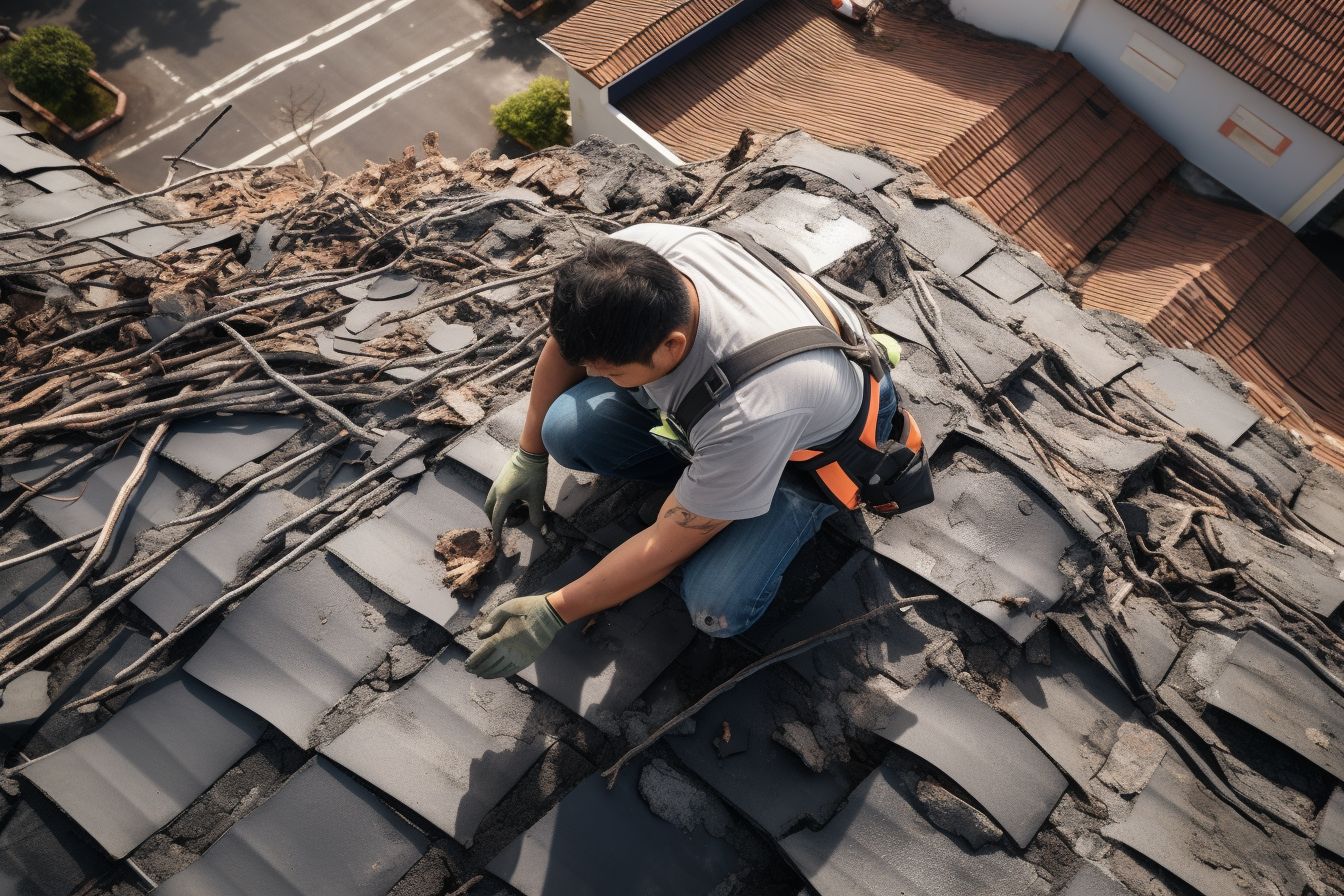
In conclusion, knowing what steps to take during an emergency roof repair can make a big difference in minimising the damage to your home. Remember to cover exposed areas, contact your homeowner’s insurance representative, and call a professional roofer immediately.
By being proactive and taking immediate action, you can protect your property and prevent further issues caused by roof damage.
FAQs
1. How do I temporarily fix a leaking roof in an emergency?
To temporarily fix a leaking roof in an emergency, use roofing tar or patches to cover the damaged area and prevent further water intrusion.
2. Can I repair a roof leak by myself?
Contacting a professional to repair a roof leak properly is recommended, as they have the knowledge and equipment necessary to fix it.
3. What should I do if my roof leaks during heavy rain?
Suppose your roof leaks during heavy rain; place buckets or containers under the leaks to catch the water and minimise damage. Then, could you contact a roofing professional for assistance?
4. How can I protect my belongings from water damage from a leaky roof?
To protect your belongings from water damage caused by a leaky roof, could you move them away from affected areas if possible? Use plastic covers or tarps to create barriers and divert water flow away from valuable items.
5. Is it safe to continue living in my house with a damaged and leaking roof?
In most cases, it is not safe to continue living in a house with a damaged and leaking roof due to potential hazards such as structural weakening or electrical issues caused by water infiltration. It’s best to seek temporary shelter elsewhere until repairs are made.

